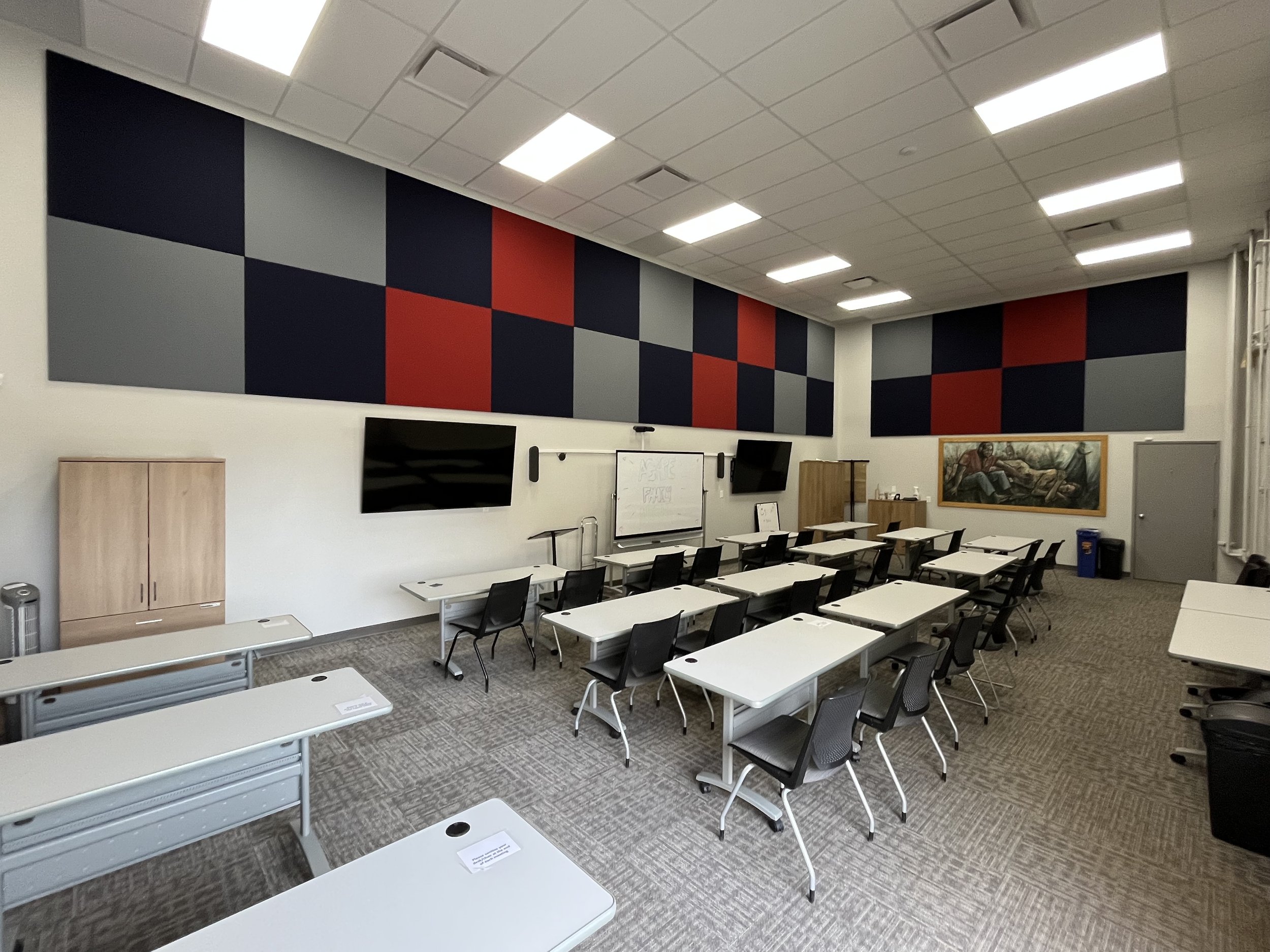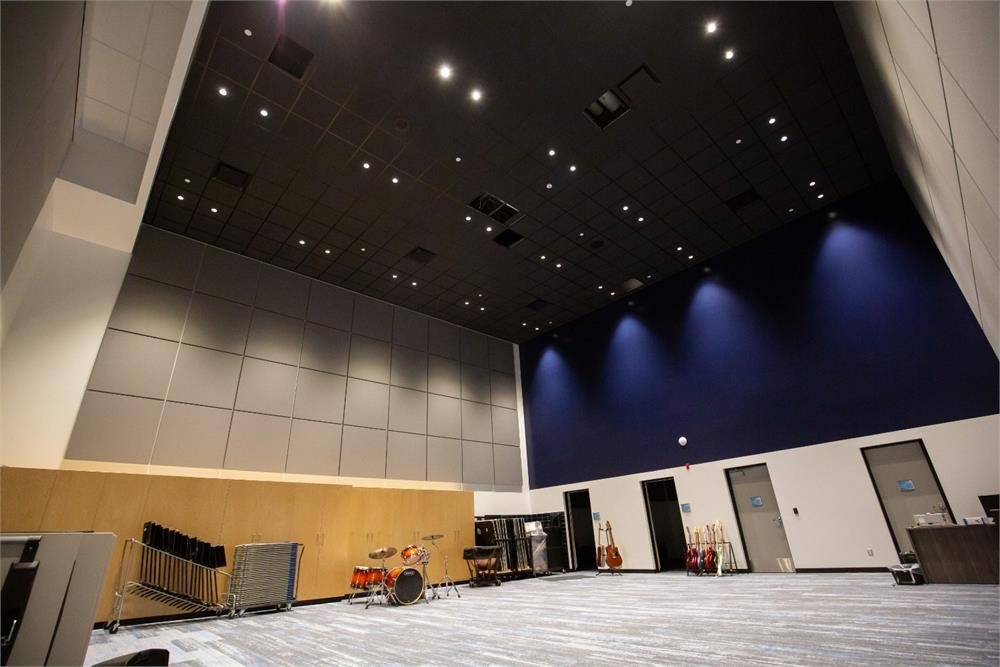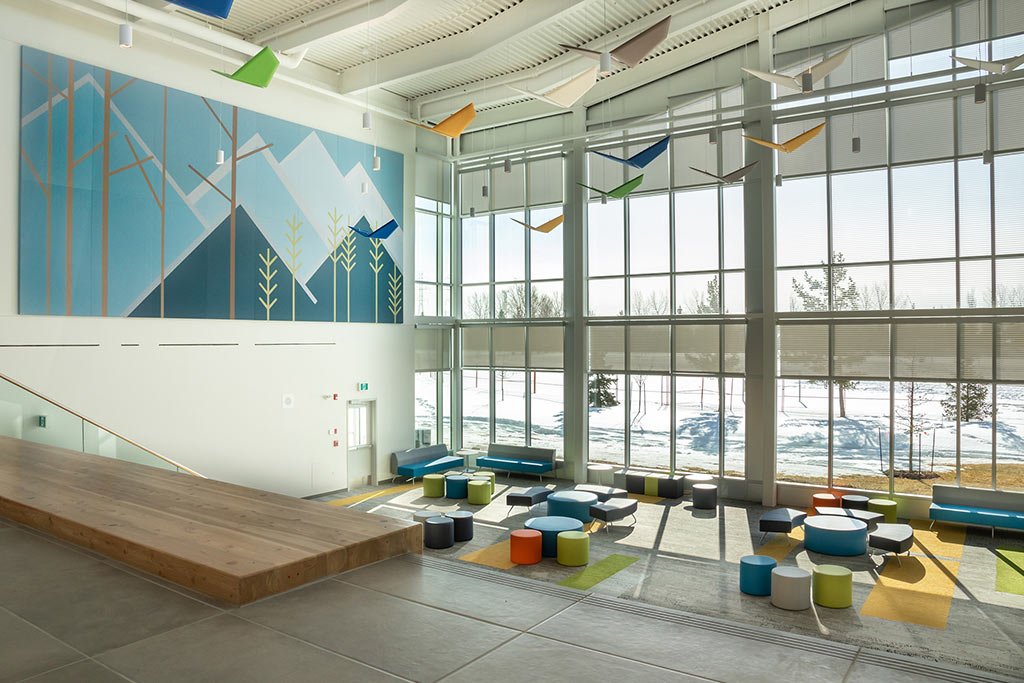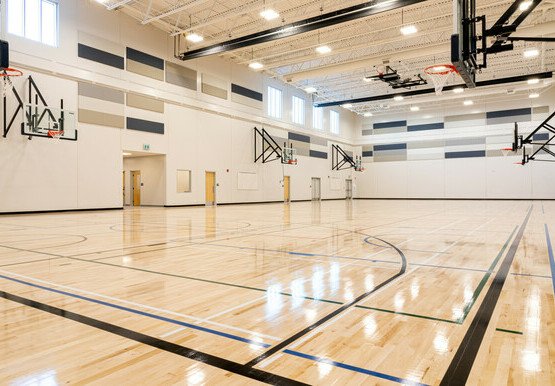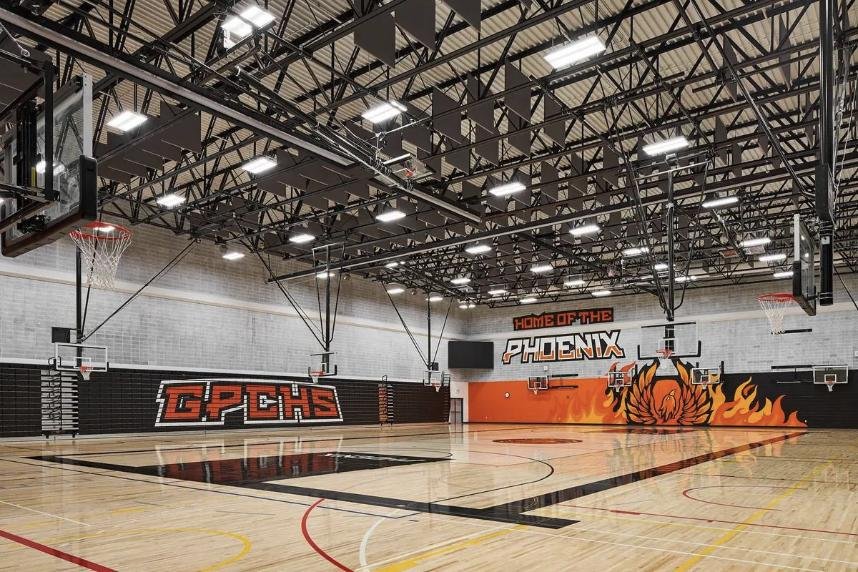Alberta Infrastructure
Acoustic Reverberation Time Requirements Summary
Information gathered from “Technical Design Requirements for Alberta Infrastructure Facilities - Version 7, August 2022”
School Guidelines
-
Reverberation in unoccupied classrooms shall not exceed RT 0.6 seconds, averaged over the frequency range of 500 Hz – 2,000 Hz.
Acceptable reverberation time can typically be achieved by specifying a ceiling with a minimum NRC 0.55. Wall surfaces should generally remain hard to promote the distribution of speech throughout the room.
Consider carpet to reduce distracting noises caused by movement of chairs and desks.
Avoid classrooms with high or vaulted ceilings. Classrooms with ceilings higher than 3m, require additional acoustic treatment on the walls to achieve the RT criterion.
Avoid highly elongated classrooms.
-
Provide acoustic treatment on both the ceiling and walls to control noise and reverberation.
Reverberation in a typical unoccupied gymnasium shall not exceed RT 2.0 seconds, averaged over the frequency range of 500 Hz - 2,000 Hz.
Acoustic treatment on the ceiling is most beneficial for general noise control. Select ceiling treatments with a minimum NRC 0.70.
Consider the use of acoustic roof deck, impact resistant acoustic ceiling panels or suspended baffles.
Acoustic spray-on material can also be used as a ceiling finish if the abuse-resistant properties (adhesion, cohesion) of the product are suitable for this environment.
Do not use glue-on ceiling tiles.
Wall treatment should be distributed over at least two adjacent walls. Select wall treatment with a minimum NRC 0.70.
Acoustic wall treatment is especially beneficial when placed on the rear wall (opposite stage) if the gymnasium is used for drama or musical events.
Extend acoustic wall treatment as low as practical.
Consider the use of impact-resistant wall panels or acoustic concrete block.
Ensure the acoustic concrete block is specified to meet the minimum required NRC 0.70, to avoid problems with selective frequency absorption. (Caution – some acoustic concrete block products have been found to reduce STC performance. Be sure that a product is selected that provides minimum STC 50, similar to regular concrete block)
-
Avoid locating music rooms next to gymnasia, classrooms or other noise sensitive rooms.
Locate non-critical spaces such as corridors and instrument storage rooms around music rooms to provide a buffer.
Consider designing music rooms with two or three exterior walls to minimize sound transmission to other instructional areas.
Reverberation Time in a typical Music Room shall be between RT 0.70 - 0.80 seconds, averaged over the frequency range of 500Hz - 2,000Hz.
Consider a ceiling height of 4m - 5m. Unlike classrooms, music rooms benefit from additional volume.
Avoid concave ceiling profiles or domes.
Consider making portions of the ceiling reflective to promote sound diffusion and ensemble between musicians.
Consider pyramidal or convex ceiling diffuser panels set into the Tbar grid covering approximately 10% - 20% of the ceiling.
Consider non-parallel sidewalls or provide sound-diffusing elements on sidewalls such as open instrument storage.
Where the instructor’s teaching position is fixed because of risers, the wall behind the instructor should have acoustic wall treatment.
Acoustic wall treatment should have a minimum NRC 0.80.
-
Consider using manufactured, modular practice rooms as an alternative to built-in place construction. Practice rooms require many specialized acoustical, mechanical and architectural construction details to function effectively.
Locate practice rooms, where possible, so they do not open directly into a music room. Consider using corridors or vestibules as a buffer.
Reverberation in unoccupied practice rooms shall not exceed RT 0.5 seconds, averaged over the frequency range of 500 Hz – 2,000 Hz.
Provide acoustic ceiling with minimum NRC 0.80.
Provide acoustic wall treatment with minimum NRC 0.80, distributed over approximately 50% of the total wall area.
Provide insulated metal or solid core door with acoustic door seals.
-
Reverberation in unoccupied common areas shall not exceed RT 0.8 seconds, averaged over the frequency range of 500 Hz – 2,000 Hz. . If the Common Area has volume larger than 800 m^3, the reverberation in unoccupied Common Areas must not exceed RT 1.2 seconds, averaged over the frequency range of 500 Hz – 2,000 Hz
Typically, corridors and lunchrooms require a ceiling with a minimum NRC 0.55. Note that high ceilinged spaces require higher sound absorption.
Typically, student gathering areas require acoustic ceiling treatment with a minimum NRC 0.70 to control the high noise levels that can occur in these spaces. Consider suspended ceilings, baffles, acoustic deck or spray-on materials.
Student gathering areas with extensive skylights or high ceilings due to clerestory fenestration require additional acoustic wall treatment to compensate for the lack of ceiling absorption. Provide a corresponding area of acoustic wall panels with a minimum NRC 0.70.
-
Reverberation in unoccupied computer labs and informal learning spaces shall not exceed RT 0.7 seconds, averaged over the frequency range of 500 Hz – 2,000 Hz. .If the space has a volume larger than 800 m^3, the reverberation must not exceed RT 1.2 seconds, averaged over the frequency range of 500 Hz – 2,000 Hz
Provide ceiling with minimum NRC 0.70.
-
Large theatres used for drama presentations have numerous acoustical requirements and should be reviewed by an acoustical consultant.
Reverberation time in unoccupied drama theatre shall not exceed RT 0.8 seconds, averaged over the frequency range of 500 Hz – 2,000 Hz.
-
Reverberation in these unoccupied spaces shall not exceed RT 0.7 seconds, averaged over the frequency range of 500 Hz – 2,000 Hz.. If the space has a volume large than 800 m^3, the reverberation must not exceed RT 1 seconds, averaged over the frequency range of 500 Hz – 2,000 Hz.
